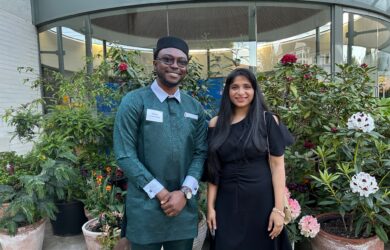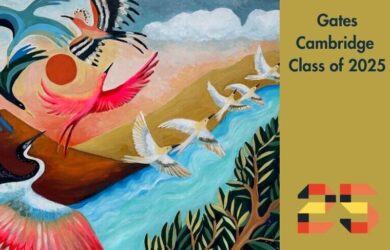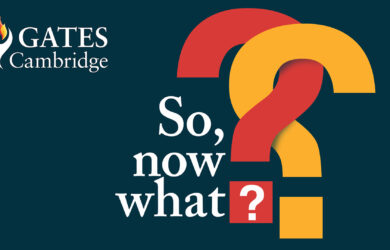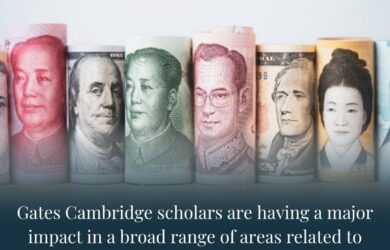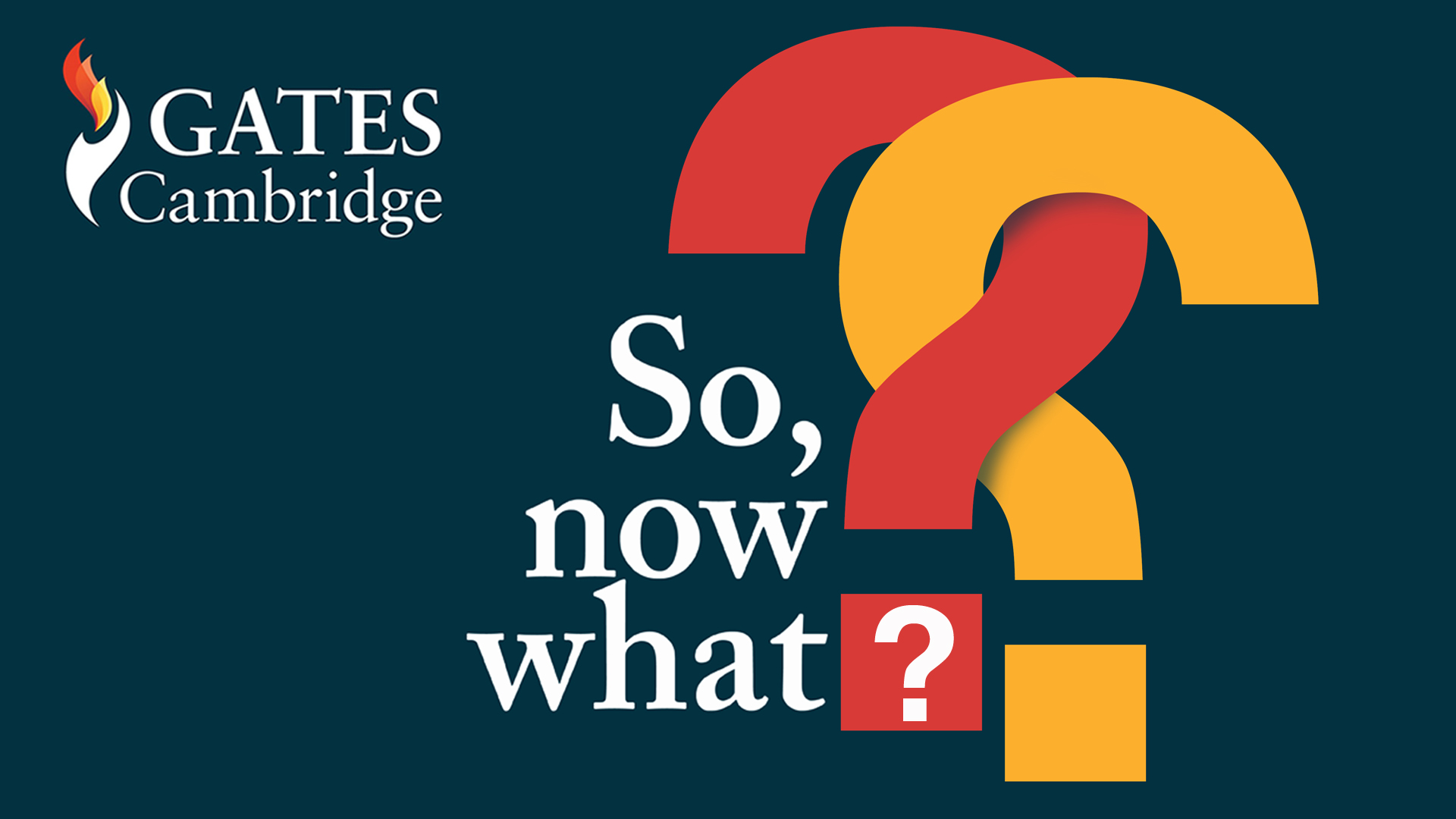
Three Gates Cambridge Scholars debate planets, space and the meaning of life in the latest episode of our So, now what? podcast.
During the very final phase of Wolf-Rayet stars, a lot of material is released in the form of dust and that dust has really beautiful structures. You can image these beautiful spirals as stellar peacocks and link them back to the physics of how the dust is produced.
Yinuo Han
What can astronomy tell us about our place in the universe? Three Gates Cambridge Scholars discuss the history of astronomy, current research into exo-planets and what studying the planets and stars tells us about our past, present and possible future in the latest episode of our podcast So, now what?
Rebecca Charbonneau, Luis Welbanks and Yinuo Han debate beauty, optimism, life on other planets, the Cold War and the impact of politics on astronomy, the meaning of life, space dust and much more, including ‘the Mexican grandma test’…
Yinuo says: “A lot of our clues come from the study of extra solar systems. I study Wolf-Rayet stars. These are really rare systems. They’re sort of the opposite of the solar system. They’re the sort of extremely massive stars that are dozens of times the mass of the sun. And they’re at the end of their evolution as a star. They’re about to explode and essentially become a black hole. And during that very final phase, a lot of that material is released into the star’s surroundings in the form of dust and that dust has really beautiful structures. You can imagine these beautiful spirals as stellar peacocks and link them back to the physics of how this dust is produced. A lot of that dust presumably goes on to fill up the volume in space and some of it might go on to form stars and planets like the ones that we live nearby. So I think this flow of material really links together the different processes happening in the universe.”
Yinuo Han [2020] is a postdoctoral research fellow at Caltech. He is mostly interested in thinking about belts of comets in alien Solar Systems, and what they tell us about how Solar Systems like our own formed. He is also interested in observing dust produced by the most massive stars, which can sometimes come out as beautiful spiral patterns and go on to feed the dust that fill the space within galaxies and make up new celestial bodies.
Luis Welbanks [2017] is an incoming Assistant Professor at the School of Earth and Space Exploration at Arizona State University. He is a leading expert in atmospheric retrieval, using Bayesian inference to extract chemical abundances from exoplanet spectra. His research bridges the gap between atmospheric observations and their interpretation, aiming to uncover the physical and chemical conditions that shape planetary atmospheres. Luis has been part of numerous successful James Webb Space Telescope proposal teams, including serving as co-PI on the largest exoplanet science allocation in Cycle 3. Previously, he was a 51 Pegasi b Fellow, a Presidential Postdoctoral Fellow, and a NASA Sagan Fellow at ASU. In 2017, he was awarded the Gates Cambridge Scholarship, which supported his PhD research at the University of Cambridge. Originally from Mexico, Luis’ journey in science has taken him across borders, from Canada to Cambridge and now the US. He is passionate about using science to break down barriers, empower communities and inspire the next generation of scientists.
Rebecca Charbonneau [2018] is a historian of astronomy whose research focuses on radio astronomy and the search for extra-terrestrial intelligence. Currently a historian at the American Institute of Physics, she earned her PhD in History and Philosophy of Science from Cambridge University as a Gates Cambridge Scholar, and an MSc in History of Science, Medicine, and Technology from Oxford University. Rebecca held postdoctoral positions at the Harvard-Smithsonian Center for Astrophysics and the National Radio Astronomy Observatory, where she was the first social scientist to receive a Jansky Fellowship. Her first book Mixed Signals: Alien Communication Across the Iron Curtain has been praised by The New Yorker, Publisher’s Weekly, Undark Magazine, and others.
The episode is the fourth of eight in the new anniversary series which will cover everything from new forms of leadership and social enterprise to new research into ageing societies. The podcasts will be posted on the last Tuesday of the month with the May podcast being on the question of how do we encourage enterprise for the common good.
Listen to the new episode here or click below.








